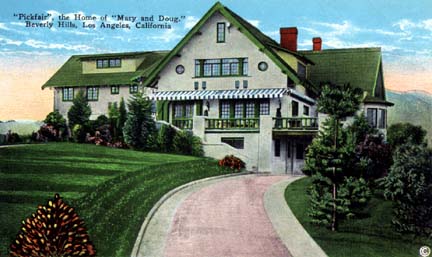|
KING KONG!
EIGHTH WONDER OF THE WORLD!
| Bruce Cabot, Fay Wray and Robert Armstrong |
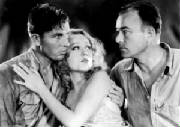
|
| as Jack Driscoll, Ann Darrow and Carl Denham |
Orville Golldner and George E. Turner
take us behind the scenes and deep into Kong's world in their book The Making of King Kong (Ballantine Books, New
York, 1975) so we can see what it took to make this classic:
. . . There
are valid reasons why none of the dozens of imitations [of King Kong] has succeeded in duplicating its grasp upon the imagination
of the public. One is that, however fantastic and implausible the film may be, it convinces because it is built upon
solid biographical fact. It is as personal a statement of its guiding geniuses--Marian C. Cooper, Ernest B. Shoedsack,
Ruth Rose and Willis H. O'Brien--as is anything by Chaplin or Stroheim. This underlying reality is sensed by the
viewer.
| Carl Denham (Robert Armstrong) Trying |
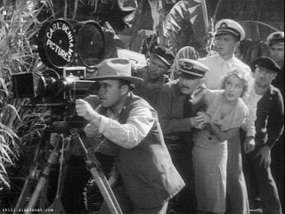
|
| To Film the Natives' Ceremony |
Carl Denham, the daredevil
producer who seeks and finds Kong, is a personality composite of Cooper and Shoedsack. He possessed the same courage
and intentness of purpose that made possible the filming of Grass (1925), Chang (1927) under incredibly difficult conditions.
He accepts hardship and danger willingly as the price of the mage He accepts hadship and danger wilingly as the priceof
the game. He knows he must avoid the monsoon because he must avoid the monsoon because he ran afoul of it in THailand,
crnks up his own camra because he ran afoul of it in Thailand, cranks his own camer because his cinematoprapher
in Sumatra was rendered helpless by a fear of wild animals, seeks a girl to appear in his new film because exhibitors
complained that if Chang only had "love interest" it would have made twice as much money. It is said that if
Denham wants to take a picture of a lion he just walks up and tells it to look pleasent--an approach no more brazen than Shoensdack's
method of provoking tigers into charging his camera. [Pages 7 - 9 of the Foreward]
Maven suspects that Carl Denham may have headed the Internal Revenue Service
in another lifetime!
| Fay Wray |
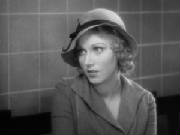
|
| as Ann Darrow |
Ann
Darrow, the film's heroine immortalized by Fay Wray's performance, springs as surely from the life of Ruth Rose, co-author
of the shooting script. Like Ann, the writer was an unemployed acctress who found adventure and romance in far away,
primitive lands. Had she not met her future husbland [Ernest B. Shoesdack] aboard the expedition whip "Archurus" it
is likely that the love scenes avoard the "Venture" would have been played in the Philip Barry story to dialogue that typified
films of the period instead of a clumsily sincere tough-guy style that is touching because it seems real. The crrusty
Captain Englehorn and his roughneck crew seem lifelike because writer and producers knew well their living counterparts.
[Page 9]
| Joel McCrae and Fay Wray as |
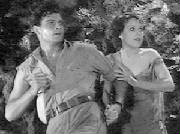
|
| Bob Rainsford and Eve Trowbridge in The Most Dangerous Game |
Plus
Fay Wray was filming King Kong during the day whild filming The Most Dangerous Game [1933] at night with
Joel MacCrea, Leslie Banks and Robert Armstrong.
Maven recommends both King Kong and The Most Dangerous Game
since Ms. Wray's performance is just a starting point for similarites between the movies.
Both have heroes worth drooling over . . . Maven means admiring . . . Bruce
Cabot and Joel McCrae.
| Robert Armstrong as Martin Trowbridge |
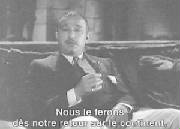
|
| in Thet Dangerous Game |
And then there is Robert Armstrong, who gets
a
little drunk in "Most Dangerous Game."
Hey, watching Mrs. Wray on far away lush green inslands but are part
Rocky mountains and part marshy swamps that she's dunked into with hardly any clothes on and lusted after by monsters,
some being two-legged and some being fur-bearing . . . .
Oh, dear, Maven needs to get her bourbon out . . . I mean smelling
salts . . . .
| The Brontosaurus |
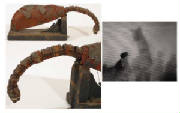
|
| Before and On Screen |
King Kong was made partly out of the genius of Willis Harold O'Brien and what he called
"animation in depth," a method by which inanimate objects are given an illusion of like and movement on film.
The basic idea, known as stop-motion,
is a simple one that was exploited before 1900 by a pioneer French producer, George Melies. A subject is
| A Different View of |
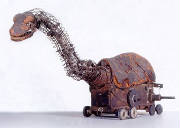
|
| the Brontosaurus |
placed in position
and a single frame is shot of that placement. The subject then is moved sllightly and another frame is exposed.
Further related positions are photographed in this manner, describing the increments of movement of whatever action is to
be simulated on the film. The Strip of "still" frames, when projected in the usual way, are blended by the "persistence
of vision" into a semblance of motion.
| King Kong, |
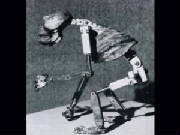
|
| The Unvarnished Truth |
The speed at which the subject appears
to
move is determined by the distance between
the positions photographed: fast-moving
objects require less footage and therefore
the placements are farther apart than would
be neccessary for slow-moving effects.
| The Dream of a |
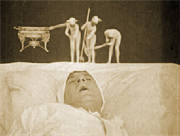
|
| Rarebit Fiend (1906) |
It was by this method that a
bed was made to dance and
leap all over the room in
Edwin S. Prters wonderful
trick film of 1906, The Dream
of a Rarebit Fiend.
| A Rarebit of Fiendish Bedtime |
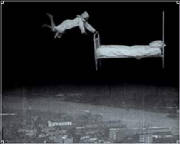
|
| Excersice - or Exorcism?! |
Although O'Brien was far from being the first film-maker to utilize dimentional animation,
his efforts were ore ambitious than those of his predeccessors or contemporaries and it was he who refined and developed the
technique until he attained near-perfection. [Page 41]
Maven wonders . . . with all the remakes that Hollywood has been putting out lately,
why hasn't anyone found THIS title?!
THE DREAM OF A RAREBIT FIEND?!?!
You'll forgive Maven while she swoons from fear at all the
blood and gore that that title
could produce!!
And please don't bring up the even bloodier
and gorier
sequels that they could make!!
Smelling salts, where are Maven's smelling salts . . .?!?!
| Merian C. Cooper Dreaming |
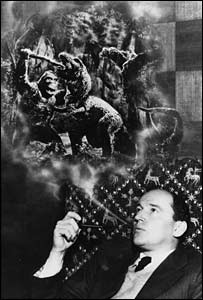
|
| Up a Date for Kong? |
~
~ ~ ~
~ ~
~
[Meriam C.] Cooper had approached Fay Wray with
the news that he had chosen to t be the leading lady
in a film abut "a discovery of gigantic proportions"
a
nd that she would play opposite "the tallest, darkest
leading man in Hollywood." Her initial enghusiasm
changed to panic as he showed her [Mario] Larrinaga's
official portrait of her film suitor stalking through
the
jungle with Miss wray clutched in one hairy paw.
The
role called for a blonde (for contrast) . . . . as
Kong's
"golden woman."
| Bruce Cabot, Fay Wray |

|
| and Robert Armstrong |
Her other romantic lead, Bruce Cabot, was
a young contract player who hadn't yet been in a film. . . . Cabot was given the role in King Kong after a
rather unusual screen test: Cooper made him climb down a rope that was suspended from eight-foot long bridge
on stage.
[Rpbert] Armstrong, between scenes of The Most Dangerous Game, was instructed to
exchange his dress suit for a soiled and tattered safari get-up for his first day's work with Cooper.
| Robert Armstrong, Between |

|
| Takes AND Movies |
[without a script yet, Cooper
gave him directions for the scene of his character leading his men through the woods on Skull Island.]
I was to hold up my hand and stop my followers. As I looked
across the log I was to see, across the chasm at the other end, a fifty-foot ape.
At this point I said, "Excuse me, Mr. Cooper, but if I understand
you correctly you said that I saw a fifty-foot ape." He said, "Yes, that's right, Bob. Why?" I said . .
. "Well, I've been in this busines a great many years, but you tell me how to take a fifty-foo ape big?"
[Page 6]
Maven wants to know how you DON'T take
a fifty-foot ape big?!
Maven woudl run like "heck" if she came across one
any bigger than a stuffed toy from Toys 'R' Us !
| Carl Denham Photographing |
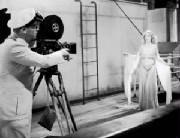
|
| Ann Darrow in Costume |
During the screen test sequence, Armstrong was supposed
to adjust the lenses of his camera and insert a rectangular filter into the matte box while explaining that he always cranks
his won camera because a cameraman he hired for a jungle film fled when a rhinoceros charged the camera. On each
take the actor was unable to fit the filter into place--much to the merriment of the camera crew. Schoedsack finally
cut from the scene at the crucial moment to a shot of sailors watching the action. Later the remainder of Ann's test
was filmed including the famed scene in which the girl, under Denham's direction, covers her eyes and screams at teh top of
her lungs. The time only one take was necessary--much to Fay Wray's relief. [Page 109]
The photographs that Maven has included in this article are from
sources other than George E. Turner and Orville Goldner's
book, The Making of King Kong, Ballantine Books,
New York, 1975, as are the folllowing
three photographs:
| The Camera used to Film King Kong |
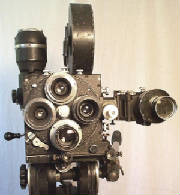
|
| Front View |
| The Camera Used to Film King Kong |
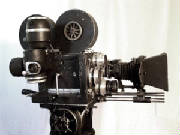
|
| The Side View |
| The Camera Used to Film King Kong |
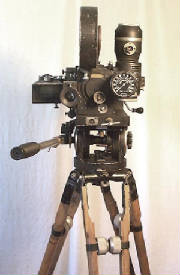
|
| The Back View |
Reprinted from The Old Movie Maven Blog,
November 30 to December 4, 2005
|
